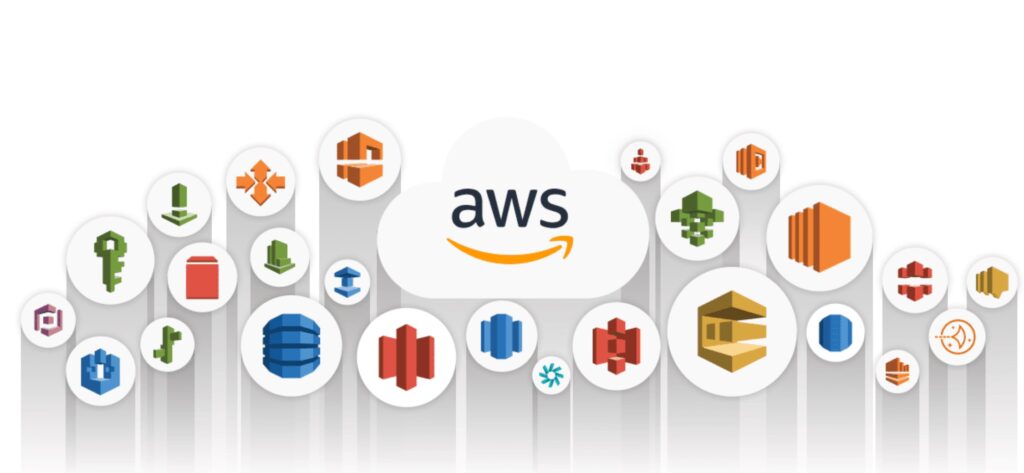Introduction
Amazon Web Services (AWS) is a comprehensive and evolving cloud computing platform provided by Amazon. Launched in 2006, AWS has grown into a giant in the tech industry, offering a wide range of cloud-based products and services that are used by millions of customers around the globe. These services include computing power, storage options, networking capabilities, and a host of other functionalities, making it a cornerstone of modern IT infrastructure.
The Core Components of AWS
- Compute Services
- Amazon EC2 (Elastic Compute Cloud): This service provides scalable computing capacity in the cloud, allowing users to run applications on virtual servers as needed. It offers flexibility with a variety of instance types tailored to different use cases.
- AWS Lambda: A serverless compute service that lets users run code without provisioning or managing servers, billed only for the compute time consumed.
- Amazon ECS (Elastic Container Service) and Amazon EKS (Elastic Kubernetes Service): These services support containerized applications, making it easier to deploy, manage, and scale containers using Docker and Kubernetes.
- Storage Services
- Amazon S3 (Simple Storage Service): A highly scalable object storage service designed for a variety of use cases, from backup and restore to big data analytics.
- Amazon EBS (Elastic Block Store): Provides block-level storage volumes for use with Amazon EC2 instances, offering high performance and availability for critical applications.
- Amazon Glacier: A low-cost cloud storage service for data archiving and long-term backup.
- Database Services
- Amazon RDS (Relational Database Service): Simplifies the setup, operation, and scaling of relational databases in the cloud, supporting multiple database engines such as MySQL, PostgreSQL, and Oracle.
- Amazon DynamoDB: A fast and flexible NoSQL database service for single-digit millisecond performance at any scale.
- Amazon Redshift: A fully managed data warehouse service designed for big data analytics, offering fast query performance on large datasets.
- Networking Services
- Amazon VPC (Virtual Private Cloud): Allows users to create isolated networks within the AWS cloud, providing control over network configuration and security.
- AWS Direct Connect: Enables a dedicated network connection from an on-premises environment to AWS, improving bandwidth and reducing latency.
- Amazon Route 53: A scalable domain name system (DNS) web service designed to route end users to Internet applications with high reliability.
- Security and Identity Services
- AWS IAM (Identity and Access Management): Helps control access to AWS services and resources securely, enabling centralized management of permissions and credentials.
- AWS Shield and AWS WAF: Provide protection against Distributed Denial of Service (DDoS) attacks and help safeguard web applications from common exploits.
- Amazon GuardDuty: A threat detection service that continuously monitors for malicious activity and unauthorized behavior.
Benefits of Using AWS
- Scalability and Flexibility: AWS provides on-demand resources, allowing businesses to scale up or down based on demand. This flexibility ensures cost-efficiency and optimal resource utilization.
- Cost-Effectiveness: With a pay-as-you-go pricing model, AWS eliminates the need for upfront capital expenditure, reducing overall costs. Customers only pay for the resources they use.
- Global Reach: AWS operates in multiple geographic regions around the world, ensuring low latency and high availability for applications. This global presence supports disaster recovery and compliance with local data residency requirements.
- Security: AWS invests heavily in security, offering robust tools and compliance certifications that meet industry standards. Customers benefit from data encryption, identity management, and comprehensive monitoring capabilities.
- Innovation and Ecosystem: AWS continually introduces new services and features, fostering innovation. The extensive AWS Marketplace and partner network provide additional tools, applications, and expertise.
Use Cases of AWS
- Startups and Enterprises: AWS supports both startups and large enterprises by providing the infrastructure needed to launch and scale applications quickly and efficiently.
- Big Data and Analytics: Services like Amazon EMR (Elastic MapReduce) and AWS Glue enable businesses to process and analyze vast amounts of data, driving insights and decision-making.
- Artificial Intelligence and Machine Learning: AWS offers a range of AI and ML services, such as Amazon SageMaker, to build, train, and deploy machine learning models at scale.
- IoT (Internet of Things): AWS IoT Core facilitates secure device connectivity and management, allowing businesses to build IoT applications that gather, process, and analyze data from connected devices.
- Gaming: AWS provides game developers with the infrastructure to build, deploy, and scale games globally, ensuring a seamless gaming experience for users.
Conclusion
Amazon Web Services has revolutionized the way businesses think about and utilize IT infrastructure. Its comprehensive suite of cloud services, coupled with scalability, flexibility, and security, has made it a preferred choice for organizations of all sizes. As AWS continues to innovate and expand its offerings, it remains at the forefront of the cloud computing industry, enabling businesses to transform and thrive in the digital age.


